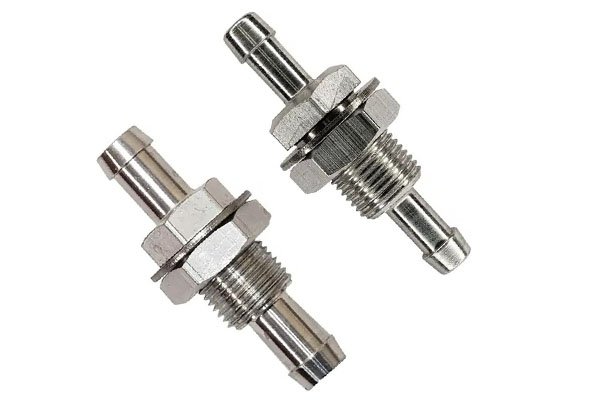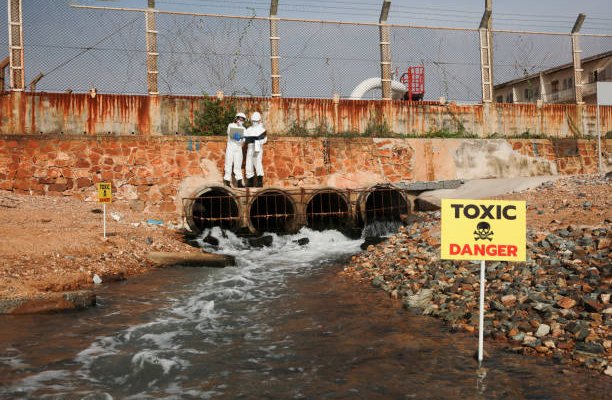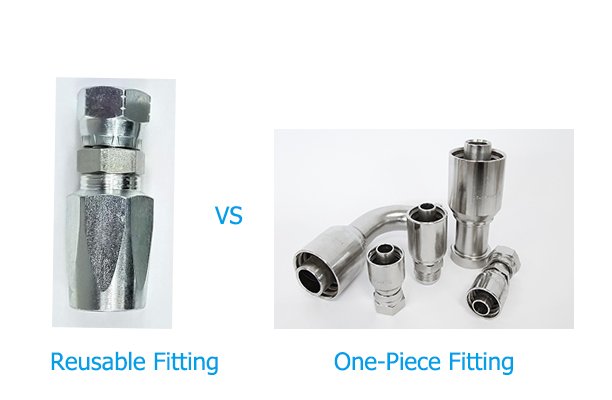Introduction to Hydraulic Bulkhead Fittings
Hydraulic systems are the lifeline of modern industries, powering everything from heavy-duty construction machinery to precise manufacturing robots. At the heart of these systems are connectors that keep hydraulic fluid flowing efficiently under high pressure. One such essential connector is the hydraulic bulkhead fitting.
Choosing the hydraulic bulkhead fittings for your needs may seem like a small decision, but in reality, it plays a major role in the safety, efficiency, and durability of your system. A mismatched or poorly selected fitting can lead to leaks, downtime, and costly repairs. On the other hand, the right fitting ensures seamless performance, reduced maintenance, and extended system life.
This article will walk you through everything you need to know: the different types of bulkhead fittings, the factors to consider before buying, installation tips, common mistakes to avoid, and much more. By the end, you’ll have a clear understanding of how to make the right choice for your hydraulic system.
What Are Hydraulic Bulkhead Fittings?
Hydraulic bulkhead fittings are specialized connectors designed to pass hydraulic hoses, tubes, or pipes through walls, panels, tanks, or bulkheads while maintaining a leak-proof seal. Unlike standard fittings, they are engineered to withstand high-pressure environments and prevent hydraulic fluid loss, even when installed in confined or complex layouts.
Here’s what makes them unique:
- Pass-through design: They allow hoses or pipes to be routed cleanly through barriers.
- Sealing capability: Built with O-rings, compression nuts, or threads that prevent leaks.
- Pressure tolerance: Designed to handle high hydraulic pressures without deforming.
- Material versatility: Available in steel, brass, stainless steel, and composites depending on the environment.
They’re often used in mobile machinery, marine systems, industrial plants, and fluid power applications where safety and performance cannot be compromised.
Importance of Using the Right Bulkhead Fittings
The importance of selecting the correct hydraulic bulkhead fitting cannot be overstated. While it may seem like a small component in a large system, it determines how well your system handles pressure, flow, and long-term durability.
1. Safety
Hydraulic systems operate at extremely high pressures—sometimes exceeding 10,000 psi. A poor-fitting connection can result in a hydraulic injection injury, where fluid penetrates the skin. This is not only dangerous but also potentially life-threatening.
2. Efficiency
Leaks cause loss of pressure, which directly reduces system performance. A properly chosen bulkhead fitting ensures the system runs at peak efficiency.
3. Cost-effectiveness
Downtime due to leaks or breakdowns can halt operations. By investing in the right fitting upfront, you save money on repairs and replacements.
4. Longevity
Different materials respond differently to pressure, chemicals, and corrosion. Matching the right fitting to your application ensures your system lasts longer with minimal wear.
Types of Hydraulic Bulkhead Fittings
Hydraulic bulkhead fittings come in a wide variety of shapes, configurations, and thread types. Each is designed to suit different routing needs, space constraints, and flow requirements. Choosing the right type is essential for both system efficiency and safety.
The most common types include:
- Straight Bulkhead Fittings – Direct connections for hoses or tubes passing straight through a wall.
- Elbow Bulkhead Fittings – Allow angled connections for tight spaces.
- Tee Bulkhead Fittings – Split fluid flow into multiple directions.
- Specialty Bulkhead Fittings – Custom or application-specific connectors for unique systems.
Let’s break them down further.
Straight Bulkhead Fittings
Straight fittings are the simplest and most widely used. They provide a direct, linear connection through a panel or enclosure.
- Use Case: Ideal for straightforward routing where hoses or tubes don’t need to bend.
- Advantages: Simple design, easier to install, and cost-effective.
- Applications: Common in hydraulic cylinders, pumps, and basic machine layouts.
These fittings are particularly popular in heavy machinery and stationary industrial equipment where space is not restricted.
Elbow, Tee, and Specialty Bulkhead Fittings

Elbow Bulkhead Fittings
Elbow fittings (45° or 90°) are essential for systems where hoses must bend around obstacles or where space is limited.
- Advantages: Prevents kinks in hoses and reduces stress on connections.
- Applications: Automotive engines, aircraft hydraulic systems, and compact industrial layouts.
Tee Bulkhead Fittings
Tee fittings allow one hydraulic line to split into two directions.
- Advantages: Efficient for systems needing multiple outputs.
- Applications: Hydraulic distribution systems, forklifts, and manufacturing plants.
Specialty Bulkhead Fittings
Some systems require custom fittings, such as:
- Reducers – To connect hoses/pipes of different sizes.
- Swivel bulkhead fittings – Allow movement while maintaining a sealed connection.
- High-pressure bulkhead fittings – Built for extreme pressure environments.
Specialty fittings are often used in aerospace, oil and gas, and marine applications.
Material Selection (Steel, Brass, Stainless Steel, Composite)
One of the most critical decisions when choosing the hydraulic bulkhead fittings for your needs is selecting the right material. Each material has unique strengths and limitations, and choosing incorrectly can result in leaks, corrosion, or premature system failure.
1. Steel Bulkhead Fittings
- Strength: Excellent for high-pressure applications, capable of handling extreme loads.
- Durability: Resistant to wear and mechanical stress.
- Best For: Construction machinery, mining equipment, agricultural hydraulics.
- Drawback: Vulnerable to corrosion unless plated or treated.
2. Brass Bulkhead Fittings
- Strength: Moderate strength, not as tough as steel.
- Corrosion Resistance: Good resistance to rust, suitable for lighter hydraulic applications.
- Best For: Low- to medium-pressure systems, plumbing-style hydraulics.
- Drawback: Not ideal for heavy industrial use due to lower pressure tolerance.
3. Stainless Steel Bulkhead Fittings
- Strength: Strong, highly durable, and resistant to both corrosion and extreme temperatures.
- Corrosion Resistance: Excellent for marine, offshore, and chemical applications.
- Best For: Oil rigs, marine hydraulics, chemical processing plants.
- Drawback: Higher cost compared to brass and steel.
4. Composite / Plastic Bulkhead Fittings
- Strength: Lightweight, best for low-pressure or specialty applications.
- Corrosion Resistance: Excellent, unaffected by most chemicals.
- Best For: Low-pressure systems, water hydraulics, and non-critical applications.
- Drawback: Limited strength and durability in heavy-duty systems.
Pro Tip: If your system operates in harsh environments (saltwater, chemical exposure, extreme temperatures), stainless steel is almost always the safest bet.
Pressure Rating and Compatibility
Hydraulic systems are defined by pressure ratings, and bulkhead fittings must match or exceed the system’s maximum operating pressure.
- Low-pressure systems (under 500 psi) – Brass or composite fittings may be sufficient.
- Medium-pressure systems (up to 3,000 psi) – Steel is the most cost-effective and widely used.
- High-pressure systems (3,000 – 10,000 psi and above) – Stainless steel or specialized high-pressure bulkhead fittings are essential.
Compatibility matters too. Using a fitting that can’t withstand the system’s pressure may result in:
- Cracked threads
- Seal failure
- Hydraulic fluid leaks
- Unsafe working conditions
Always check the manufacturer’s rated working pressure before selecting a fitting.
Thread Type, Size, and Environmental Considerations
Thread Types
Different hydraulic systems use different thread standards. Choosing the wrong one can cause leaks or even equipment failure. The most common include:
- NPT (National Pipe Tapered) – Widely used in North America.
- BSP (British Standard Pipe) – Common in Europe and Asia.
- JIC (Joint Industry Council) – 37° flare fitting, highly reliable.
- ORFS (O-Ring Face Seal) – Excellent for high-pressure, leak-free connections.
Size Considerations
Fittings must match the inner diameter (ID) of the hose or tube. Even a slight mismatch can cause turbulence, reduce flow efficiency, or lead to leaks.
Environmental Factors
- Marine Environments – Stainless steel is a must due to saltwater corrosion.
- Chemical Plants – Choose fittings compatible with the specific chemicals handled.
- High Vibration Areas – Swivel fittings or O-ring face seals help prevent loosening.
- Extreme Temperatures – Stainless steel or treated steel offers superior resistance.
Golden Rule: Always match fitting size and thread type to your existing hydraulic components to ensure a tight, leak-proof seal.
Installation Tips for Hydraulic Bulkhead Fittings
A high-quality fitting won’t perform well if it’s installed incorrectly. Proper installation is just as important as choosing the right size and material.
1. Preparing the Bulkhead Surface
- Ensure the surface is clean and smooth before installation. Any debris or rough edges can damage the fitting and compromise the seal.
- Use a properly drilled hole that matches the fitting size exactly. Oversized holes lead to instability, while undersized holes can damage threads.
2. Proper Torque Application
- Tighten the fitting to the manufacturer’s torque specifications.
- Over-tightening may strip threads, crack the bulkhead, or deform the fitting.
- Under-tightening leaves gaps that can cause hydraulic leaks under pressure.
3. Sealants and O-Rings
- Some fittings require thread sealants (like PTFE tape or anaerobic liquid sealant).
- Compression fittings and O-ring face seals generally don’t need sealants—adding them could actually cause problems.
- Always check the fitting type before applying sealant.
4. Leak Prevention and Maintenance
- After installation, perform a pressure test before putting the system into full operation.
- Inspect regularly for early signs of leakage, corrosion, or vibration damage.
- Replace worn O-rings or seals immediately to prevent costly downtime.
Pro Tip: Document torque values, sealant use, and installation dates for maintenance tracking.
Common Mistakes to Avoid
Even experienced technicians can make mistakes when installing or choosing hydraulic bulkhead fittings. Avoiding these errors ensures a safer and longer-lasting system.
1. Using the Wrong Size
- A fitting that’s even slightly too small or large will cause leaks.
- Always measure hose/tube diameter carefully before selecting a fitting.
2. Mixing Incompatible Materials
- Combining steel and brass can lead to galvanic corrosion.
- Use consistent materials wherever possible, or apply anti-corrosion coatings if mixing is unavoidable.
3. Ignoring Pressure Ratings
- Using a brass fitting in a high-pressure steel system is a common mistake.
- Always check the system’s maximum operating pressure and match it to the fitting rating.
4. Over-Tightening Threads
- Many assume “tighter is better.” In reality, over-tightening weakens threads and increases the chance of failure.
5. Skipping Preventive Maintenance
- Small leaks can go unnoticed but may cause major system failures over time.
- Routine inspections are critical.
Applications of Hydraulic Bulkhead Fittings
Hydraulic bulkhead fittings are used in nearly every industry where hydraulic power plays a role. Their ability to pass lines through barriers while maintaining high-pressure integrity makes them indispensable.
1. Automotive and Heavy Equipment
- Found in brake lines, transmission systems, and hydraulic lifts.
- Used in construction equipment like bulldozers and excavators where robust, vibration-resistant fittings are essential.
2. Marine and Offshore Systems
- Stainless steel bulkhead fittings prevent saltwater corrosion.
- Used in ships, oil rigs, and offshore cranes where reliability is critical under extreme conditions.
3. Industrial and Manufacturing Plants
- Support hydraulic systems in presses, conveyor belts, and robotic machinery.
- Allow clean routing of hydraulic lines through walls or machinery panels.
4. Aerospace and Defense
- Specialty bulkhead fittings are used in aircraft for hydraulic controls.
- Require extremely lightweight and durable materials like titanium or high-grade stainless steel.
Benefits of Choosing the Right Hydraulic Bulkhead Fittings
Selecting the right bulkhead fittings for your hydraulic system is more than just a technical decision—it has a direct impact on system performance, maintenance costs, and overall reliability. Here’s why making the right choice pays off:
1. Enhanced System Efficiency
When fittings are properly sized, installed, and pressure-rated, hydraulic fluid flows smoothly without restrictions. This results in:
- Consistent pressure levels
- Reduced fluid turbulence
- Improved machine responsiveness
Efficient fittings minimize energy losses and maximize overall system performance.
2. Longer Service Life
Using the right material (steel, brass, stainless steel, or composite) for your environment prevents premature wear and tear. For example:
- Stainless steel fittings in marine environments resist saltwater corrosion.
- Steel fittings in construction machinery withstand heavy vibration and stress.
Choosing correctly means less frequent replacements and a longer-lasting hydraulic network.
3. Reduced Downtime and Maintenance Costs
A system with the wrong fittings often suffers from leaks, bursts, and unexpected failures. The right fittings reduce:
- Costly breakdowns
- Emergency repairs
- Production downtime
This translates into better return on investment (ROI) and improved operational uptime.
4. Safety Assurance
Hydraulic leaks are not just inconvenient—they’re dangerous. Properly rated and installed fittings prevent high-pressure fluid ejections that could cause severe injuries.
Where to Buy Hydraulic Bulkhead Fittings
The quality of your fittings depends not only on the material and type but also on where you source them.
1. Local Suppliers
- Advantages: Immediate availability, face-to-face support, and the ability to physically inspect fittings.
- Best For: Emergency replacements and smaller-scale projects.
2. Online Stores
- Advantages: Wide selection, easy price comparison, and convenient ordering.
- Examples: Amazon, Grainger, Motion Industries, and McMaster-Carr.
- Best For: Businesses that need bulk orders and reliable delivery.
3. Trusted Brands and Manufacturers
When performance and safety are critical, sourcing from reputable brands is the best choice. Some industry leaders include:
- Parker Hannifin – Known for high-performance hydraulic solutions.
- Eaton – Offers a wide range of fittings for industrial and mobile hydraulics.
- Swagelok – Specializes in precision fittings with exceptional leak resistance.
For more details, you can explore suppliers like Hydraulic Supply Company, which offers fittings from multiple trusted brands.
Conclusion
When it comes to choosing the hydraulic bulkhead fittings for your needs, the details matter. The right fitting ensures leak-free performance, higher efficiency, and longer service life, while the wrong one can lead to costly downtime and safety risks.
By carefully considering material, pressure rating, size, and environment, you can select a fitting that matches your system perfectly. Whether you’re working in automotive, marine, industrial, or aerospace applications, investing in the right bulkhead fittings today will save you time, money, and headaches tomorrow.
FAQs
1. What is the main purpose of a hydraulic bulkhead fitting?
To allow hydraulic hoses or pipes to pass through a wall, tank, or enclosure while maintaining a leak-free, pressure-resistant connection.
2. How do I know what size bulkhead fitting I need?
Measure the inner diameter (ID) of your hose or tube and match it with the manufacturer’s specifications for the fitting.
3. Can I reuse hydraulic bulkhead fittings?
Yes, if the fitting is in good condition with no cracks, stripped threads, or worn seals. However, always inspect before reuse.
4. Are stainless steel fittings better than brass?
It depends on the application. Stainless steel is ideal for corrosive and high-pressure environments, while brass is more cost-effective for moderate-pressure systems.
5. Do hydraulic bulkhead fittings always need sealant?
Not always. Compression and O-ring fittings don’t require additional sealants. Threaded fittings often do.
6. Can bulkhead fittings handle high-pressure hydraulic systems?
Yes—provided you select a fitting with a pressure rating equal to or higher than your system’s operating pressure.





